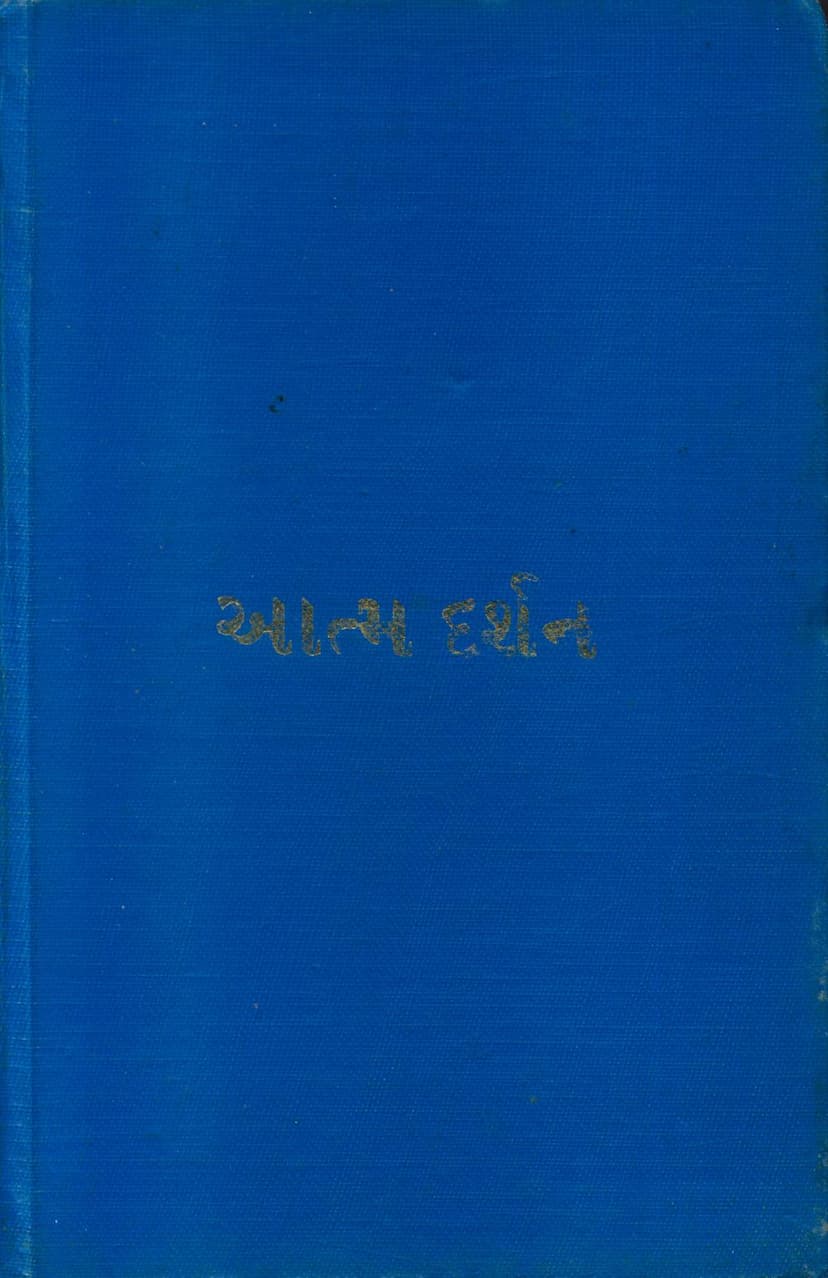Aatmdarshan
Added to library: September 1, 2025

Summary
Here's a comprehensive summary of the Jain text "Aatmdarshan" by Ramniklal Savla, based on the provided text:
Overall Theme: Self-Realization and the Path to Liberation
The core message of "Aatmdarshan" revolves around the realization of one's true, pure, and omniscient soul (Atma) and the path to liberation (Moksha) from the cycle of birth and death (Samsara). The book emphasizes that true happiness and liberation are found within, by turning inward and understanding the nature of the soul, rather than seeking fulfillment in external objects or worldly pleasures.
Key Concepts and Chapters:
The book is structured around several key concepts, each explored in detail through its chapters:
-
Aatmdarshan (Self-Observation) and Aatma Prasiddhi (Self-Glorification):
- The primary goal is to achieve "Aatma Prasiddhi," meaning the true recognition and manifestation of the soul, which has been hidden for infinite time.
- This is contrasted with "Raag ki Prasiddhi" (glorification of attachment/passion), which is the cause of wandering in the cycle of existence.
- True self-realization occurs through Samyakdarshan (right faith) and Samyagjnana (right knowledge).
- The path involves turning one's knowledge inward, understanding the soul as pure consciousness, separate from attachments (Raag) and emotions.
-
The Nature of the Soul (Aatma):
- The soul is described as "Jaanmatra" (pure knowledge), the knower and perceiver, distinct from body, senses, mind, and emotions.
- It possesses infinite powers and qualities, all contained within its "Jaanmatra" essence.
- The soul is described as Anekant-Murti (possessing infinite aspects), with 47 distinct powers.
- It is also described as "Amurtatva Shakti" (immaterial) and devoid of physical attributes.
-
The Path to Self-Realization:
- Shrävan (Listening), Grahan (Understanding), Dharana (Retention), Manthan (Contemplation), and Nirnay (Decision): The book outlines a progressive path for spiritual growth, moving from merely hearing the teachings to deeply understanding, retaining, contemplating, and finally making a firm decision about the true nature of the soul.
- Turning Inward: The primary practice is to withdraw the senses and mind from external objects and focus inward on the soul's true nature.
- Discernment (Bhed Vigyan): Understanding the difference between the soul (Jeev) and non-soul (Ajeev) substances, and between one's true nature and accidental states (like emotions and karma), is crucial.
- Self-Effort (Purushartha): Liberation is achieved through one's own effort. While external aids like good company, scriptures, and virtuous practices (Shubh Bhav) are helpful, the ultimate transformation comes from within.
- Renunciation of External Desires: True happiness comes from within, not from external objects. Attachment to worldly pleasures and aversions to worldly sufferings are seen as hindrances.
-
The Five States of Being (Panch Bhav):
- The text elaborates on the five types of transformations or states of being in the soul:
- Aupashmik Bhav: Temporary suppression of impurities.
- Kshayik Bhav: Complete destruction of karmic impurities (leading to omniscience).
- Kshayopashmik Bhav: Partial destruction and suppression of impurities.
- Audayik Bhav: Manifestation of karma's effects.
- Parinamik Bhav: The soul's inherent, unchanging nature.
- The classification and understanding of these states are presented as a means to differentiate between the soul's true nature and its modifications due to karma.
- The text elaborates on the five types of transformations or states of being in the soul:
-
The Importance of Right Faith (Samyakdarshan) and Right Knowledge (Samyagjnana):
- These are presented as the foundation for spiritual progress. Right faith involves correctly understanding the true nature of the soul and the principles of Jainism.
- Right knowledge involves a deep and accurate understanding of these principles.
- The book emphasizes the difference between true knowledge (which leads to liberation) and mere intellectual understanding that doesn't transform one's perspective.
-
The Role of Nayas (Perspectives):
- The text highlights the importance of understanding Nayas (different viewpoints or logical instruments for understanding reality) in Jain philosophy.
- It explains the distinction between Nischay Naya (ultimate truth, focusing on the soul's inherent nature) and Vyavahar Naya (conventional truth, focusing on empirical reality and actions).
- The ultimate goal is to go beyond all perspectives and directly realize the soul's true nature.
-
Karma and its Influence:
- The book provides a simplified explanation of karma, explaining how actions lead to karmic bondage and subsequent experiences in different life forms.
- It clarifies that karma is inanimate (Jad) and does not inherently cause happiness or suffering; rather, it's the soul's reaction (Bhav) to karma's influence that leads to these states.
- Understanding karma is essential to break free from its bondage through Samyakdarshan, Samyagjnana, and Samyakcharitra.
-
The Path to Liberation (Moksha Marg):
- Moksha is the ultimate goal, achieved by eradicating all karmas and realizing the soul's inherent pure state.
- The path involves the cultivation of Ratnatrayi (Three Jewels): Right Faith, Right Knowledge, and Right Conduct.
- The book details various practices and principles that lead to this realization, emphasizing consistent effort and inward focus.
Structure and Tone:
The book is presented as a spiritual guide, offering profound philosophical insights in a didactic and encouraging tone. It addresses the reader directly ("O Soul!") and guides them through the complexities of spiritual realization with clarity and depth. The detailed listing of the 47 powers of the soul and the breakdown of the five bhavas are particularly noteworthy for their thoroughness.
In essence, "Aatmdarshan" is a comprehensive spiritual treatise that aims to awaken the reader to their true identity as the pure, omniscient, and blissful soul, guiding them on the arduous yet ultimately rewarding path of self-discovery and liberation within the framework of Jain philosophy.